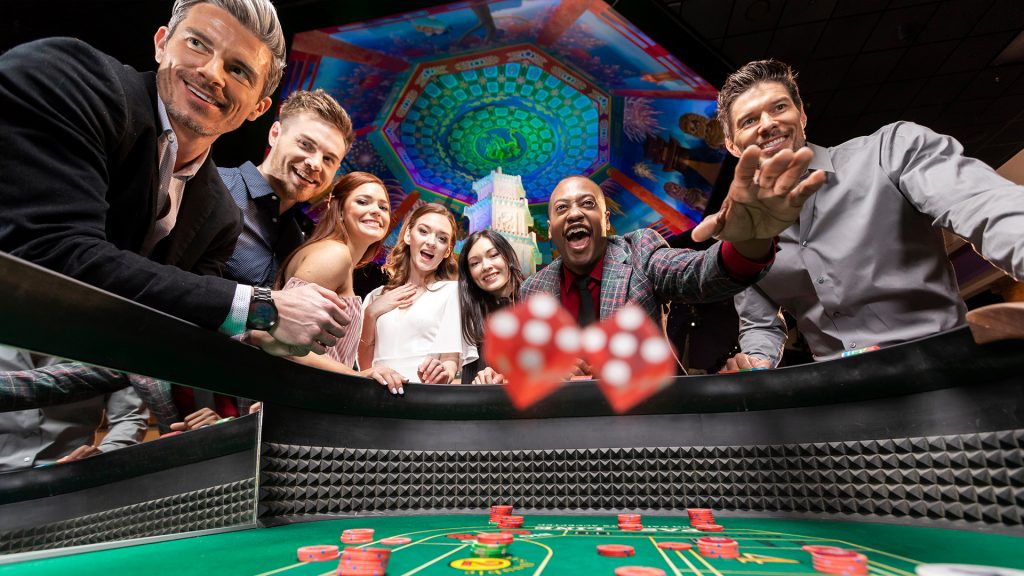
Casino experiences have long captivated the human imagination, drawing players into a universe filled with fortune, tactics, and the allure of thrill. Each activity is meticulously crafted not just for fun, but also to elicit particular emotional responses that keep gamblers immersed and invested. Understanding the motivations behind these designs reveals much about how behavioral psychology plays a vital role in the gaming experience.
From the bright lights and vibrant sounds to the complex layering of guidelines and payoffs, casino games are designed to create an atmosphere of anticipation and expectation. Game designers leverage behavioral strategies to influence player behavior, whether through the use of jackpots, near-miss scenarios, or community engagement. By examining these aspects, we can better appreciate how casino games fulfill not just a want for entertainment, but underlying psychological needs for adventure and hazard.
Comprehending Player Behavior
Casino games are crafted with a profound understanding of player psyche, which is crucial for luring and keeping players. The excitement of the game, combined with the expectation of winning, creates a formidable draw. Game designers employ elements like sound effects, colorful graphics, and captivating gameplay to engage attention and elicit emotional responses. These sensory experiences enhance the total environment, making players feel more involved in the game.
Another significant aspect of player behavior is the concept of risk and reward. Casino games often weigh high-risk scenarios with the potential for considerable rewards, which can result in the occurrence known as near-miss effect. When players come within reach to winning, the brain produces dopamine, bolstering their behavior and motivating them to keep playing in search of that elusive win. This cycle of hope and letdown plays a key role in how games are designed and advertised.
Lastly, social factors also play a pivotal role in player behavior at casinos. Many games are crafted to be played in groups or in company with other players, fostering a sense of community and collective experience. The interaction inherent in games like blackjack enhances enjoyment and can culminate in prolonged gaming periods. Designers capitalize on this by designing environments that encourage players to remain, interact, and return, making the overall casino experience more inviting.
The Role of Visuals and Audio
Visuals and sound play a vital role in improving the gambler’s experience within gambling games. Designers utilize vibrant colors, eye-catching graphics, and captivating animations to grab gambler’s attention and hold their interest. The use of motifs, such as adventure or luxury, helps create an immersive atmosphere that takes players into another world. By connecting to the senses, these elements contribute to a heightened emotional response, prompting players to engage more deeply with the games.
Audio design is just as important in reinforcing the overall experience of gambling games. The mix of ambient music, audio effects for successful combinations, and ambient noises creates an auditory landscape that holds players enthralled. Sounds associated with wins, such as chiming bells or festive music, evoke feelings of excitement and reward, encouraging players to keep playing. These sound cues are strategically placed to amplify the thrill of the game and create a more immersive experience.
Additionally, the synchronization of imagery and sound is essential for reinforcing the game’s overall theme and mood. Each element should align seamlessly to create a unified experience that draws players in. The effective use of this integration not only enhances user enjoyment but also boosts the likelihood of repeat play, as players become more invested in the immersive world that the gambling games offer. This thoughtful integration of visuals and audio ultimately enhances player involvement and loyalty.
Reward Systems and Participation
The creation of casino games heavily relies on incentive structures to keep players involved and coming back for more. These systems are based in psychological principles that exploit human behavior and motivation. Participants are often motivated by the thrill of success, which is reinforced by instant responses through the game structure’s design. This instant gratification not only improves the gaming experience but also cultivates a feeling of achievement, encouraging players to continue playing in hopes of bigger gains.
Casinos implement various reward structures, such as jackpots, extra rewards, and multipliers, to captivate players. These elements create a layer of excitement that maintains engagement. Additionally, the unpredictability of outcomes plays a significant role in keeping attention. Đăng Ký FB88 The intermittent reinforcement schedule, where wins are unpredictable but occur often enough, maintains players on edge and motivated to continue participating. This loop of anticipation and anticipation is foundational to the effectiveness of casino games.
In addition, community aspects, such as tournaments and collaborative options, enhance the engagement factor by leveraging the desire to compete of players. fb88nn.com The shared experience of gaming with others can intensify the excitement of winning and create a community atmosphere within the gaming space. By combining these social dynamics with efficient incentive structures, casino games don’t just provide fun but also nurture a stronger connection among players, reinforcing their commitment to the gaming experience.
